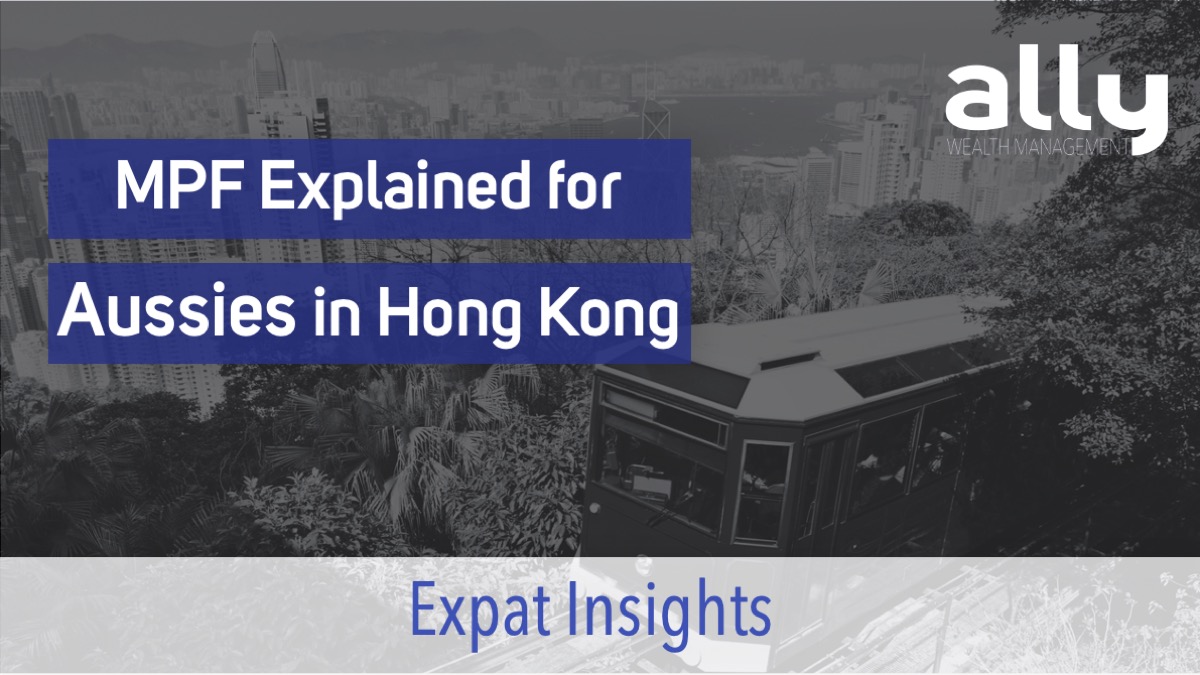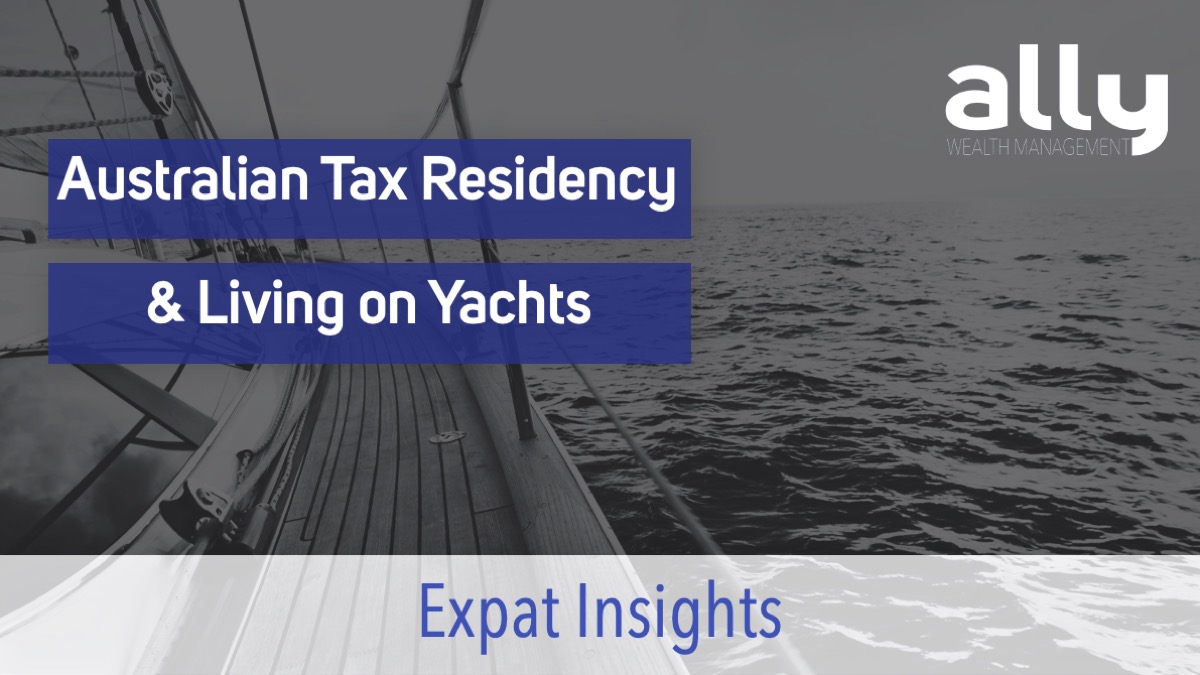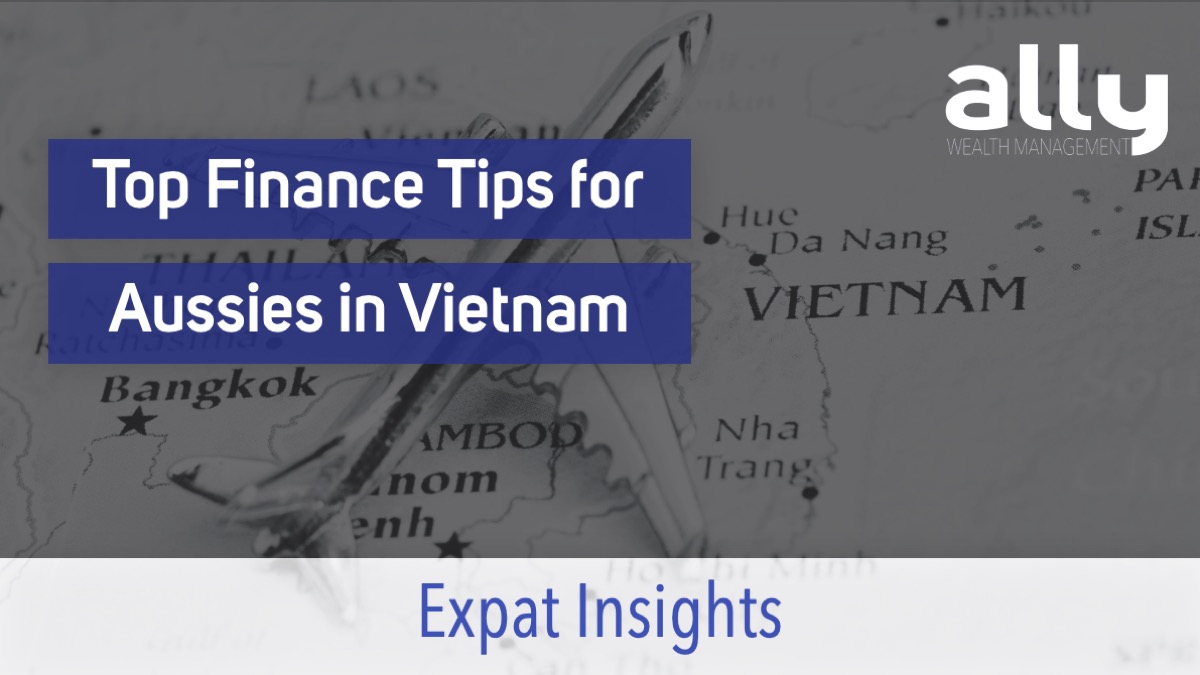MPF Explained for Australian Expats in Hong Kong
If you’re an Australian expat living and working in Hong Kong, navigating the Mandatory Provident Fund (MPF) might feel like a daunting task. However, understanding how this retirement savings scheme works is essential, especially if you plan to eventually return to Australia.
This guide will break down the key aspects of the MPF, including contribution rates, investment options, the Default Investment Strategy (DIS), tax implications when returning to Australia, and the process for withdrawing your MPF when you leave Hong Kong for good.
Contribution Rates: How Much Do You Need to Contribute?
One of the first things you’ll notice about the MPF is the mandatory nature of contributions. Unlike in Australia, where superannuation might be more familiar to you, Hong Kong’s MPF system requires contributions from both you and your employer.
Employee Contributions
As an employee in Hong Kong, you’re required to contribute 5% of your relevant income to your MPF account. The term “relevant income” refers to your basic salary, excluding things like bonuses or overtime pay. However, there’s a catch—contributions are subject to income caps, both minimum and maximum.
- Minimum Relevant Income: If you’re earning less than HKD 7,100 per month, you’re not required to make any employee contributions. This can be particularly helpful if you’re working part-time or just starting out in a lower-paying role.
- Maximum Relevant Income: On the other hand, if your monthly income exceeds HKD 30,000, your contributions are capped. This means you’ll only be required to contribute up to HKD 1,500 per month, even if your salary is higher. It’s important to note that this cap also applies to your employer’s contributions, so the total contribution to your MPF account from both you and your employer would be HKD 3,000 per month.
This structure is designed to ensure that everyone contributes a fair amount towards their retirement savings, without placing an undue burden on those with lower incomes. However, if you’re in a higher income bracket, you might want to explore additional savings options to ensure you’re setting aside enough for retirement.
Employer Contributions
Your employer is also required to contribute 5% of your relevant income to your MPF account, matching your contribution. This is similar to the employer superannuation contributions you’re familiar with in Australia, but with the added twist of the income cap.
If you earn more than the HKD 30,000 monthly cap, your employer’s contributions are also capped at HKD 1,500 per month. This means that while you’re earning a higher salary, the amount going into your MPF doesn’t increase beyond this point. Understanding this cap is crucial when planning your long-term retirement savings strategy, as it might necessitate additional savings plans to ensure you meet your retirement goals.
Self-Employed Contributions
If you’re self-employed in Hong Kong, the responsibility for MPF contributions falls entirely on your shoulders. You’ll still contribute 5% of your income, with the same minimum and maximum caps applying. The flexibility of being self-employed can be both a blessing and a curse here—you control how much you earn and contribute, but you also bear the full responsibility for ensuring that your retirement savings are on track.
Making regular contributions as a self-employed individual can be more challenging, especially if your income fluctuates. However, staying disciplined with your contributions is key to building a solid retirement fund. If you’re in this category, it might be worth setting up a monthly reminder or automatic transfers to your MPF account to ensure you’re consistently saving.
Additional Voluntary Contributions
While the mandatory contribution rates are set, you do have the option to make additional voluntary contributions (AVC). This is a great way to boost your retirement savings, especially if you’re concerned that the capped contributions won’t be sufficient for your long-term goals. AVCs can be made directly to your MPF account, allowing you to take advantage of the same investment options available for your mandatory contributions.
If you’re an Australian expat with a higher income, AVCs can help bridge the gap between your current savings and what you’ll need in retirement. Additionally, because AVCs are flexible, you can adjust the amount you contribute based on your financial situation, making it easier to save more during higher-income months.
Investment Options: Customising Your MPF
Once your contributions start flowing into your MPF account, the next step is deciding how to invest those funds. The MPF system offers a range of investment options, allowing you to tailor your portfolio based on your risk tolerance and retirement goals. This is similar to choosing how to invest your superannuation in Australia, but with some unique considerations for the Hong Kong market.
Overview of MPF Investment Choices
The MPF system offers several types of funds, each with different risk and return profiles. Here’s a quick overview of the main options available to you:
- Equity Funds: These funds invest primarily in stocks, offering the potential for higher returns but also carrying more risk. Equity funds are ideal if you have a longer time horizon before retirement and can afford to ride out the market’s ups and downs.
- Bond Funds: Bond funds focus on fixed-income securities, such as government and corporate bonds. These are generally considered lower risk than equity funds, making them a good choice if you’re closer to retirement or prefer a more conservative investment strategy.
- Mixed-Asset Funds: These funds combine stocks and bonds in varying proportions, offering a balanced approach to risk and return. Mixed-asset funds are a good middle-ground option if you’re looking for diversification without going all-in on either equities or bonds.
- Money Market Funds: These funds invest in short-term, low-risk instruments such as Treasury bills and certificates of deposit. While the returns are lower, money market funds are considered very safe, making them suitable if you want to preserve capital, especially as you near retirement.
- Guaranteed Funds: These funds offer a guaranteed return, typically at a lower rate. They are designed to protect your principal investment while offering modest growth, making them an attractive option if you prioritise safety over high returns.
Risk vs. Return Considerations
When choosing your MPF investment options, it’s essential to consider the balance between risk and return. Higher-risk investments, like equity funds, offer the potential for greater returns but can be more volatile. If you’re young and have many years before retirement, you might be more willing to take on this risk for the possibility of higher growth. On the other hand, if you’re closer to retirement or prefer a more stable approach, lower-risk options like bond or money market funds might be more appropriate.
A key factor to consider is how long you plan to stay in Hong Kong and whether you’ll be moving back to Australia soon. If your time in Hong Kong is limited, it might make sense to opt for safer investments to avoid the risk of market downturns just before you withdraw your funds.
Choosing the Right Fund
Selecting the right fund mix for your MPF is a personal decision that depends on your financial goals, risk tolerance, and time horizon. Here are a few tips to help you make an informed choice:
- Assess Your Risk Tolerance: Be honest about how much risk you’re comfortable with. If the thought of losing money in a market downturn keeps you up at night, lean towards more conservative options.
- Diversify Your Investments: Spread your contributions across different types of funds to balance risk and return. Diversification can help protect your savings from significant losses if one market segment performs poorly.
- Consider Your Retirement Timeline: The closer you are to retirement, the more conservative your investment strategy should be. As you near retirement age, it might be wise to gradually shift your investments towards lower-risk options to preserve your savings.
Taking the time to evaluate your options and adjust your investment strategy as needed will help ensure that your MPF account grows in line with your retirement goals.
The Default Investment Strategy (DIS)
For those who are unsure about which investment options to choose or prefer a hands-off approach, the MPF offers a Default Investment Strategy (DIS). The DIS is designed to provide a balanced and low-cost investment strategy that automatically adjusts as you age, helping to manage risk as you approach retirement.
Explanation of DIS
The DIS is essentially a “set it and forget it” option for your MPF. It consists of two mixed-asset funds:
- Core Accumulation Fund (CAF): This fund is more growth-oriented, with a higher proportion of equities (up to 60%) and the rest in bonds. It’s designed for younger members who have more time before retirement.
- Age 65 Plus Fund (A65F): As the name suggests, this fund is for members closer to retirement. It has a more conservative asset mix, with a higher proportion of bonds (up to 80%) and a smaller equity component, aiming to preserve capital.
Under the DIS, your contributions are initially invested in the CAF. Then, starting at age 50, your investments are gradually shifted from the CAF to the A65F. By the time you reach 65, most of your MPF savings will be in the A65F, minimising exposure to market volatility.
Suitability of DIS for Australian Expats
The DIS can be a good choice if you prefer a simple, low-maintenance investment strategy. However, it’s important to consider whether the DIS aligns with your personal financial situation and goals, especially if you’re planning to retire in Australia.
One thing to keep in mind is that the DIS is designed with the average Hong Kong worker in mind, not necessarily an Australian expat. The asset allocation and risk profile may not be the best fit if you have different retirement plans or financial needs. For example, if you plan to retire earlier than 65 or have other retirement savings in Australia, you might prefer a more aggressive or tailored investment strategy.
If you’re unsure whether the DIS is right for you, it might be worth seeking advice from a financial professional who understands both the Hong Kong MPF system and the Australian superannuation landscape. This can help ensure that your retirement savings are aligned with your overall financial goals, particularly if you plan to return to Australia.
Tax Implications When Returning to Australia
As an Australian expat, one of the key considerations when managing your MPF is understanding the tax implications when you eventually return to Australia. The interaction between the Hong Kong MPF and the Australian tax system can be complex, and getting it right is essential to avoid unexpected tax bills.
Australian Tax Residency
When you return to Australia, your tax residency status will change, which can have significant implications for your MPF. Generally, if you’ve been living overseas for an extended period, you might have been classified as a non-resident for tax purposes. However, once you move back to Australia, you’ll likely be considered a resident again, bringing all your global income and assets back under the Australian tax umbrella.
It’s important to be aware of the timing of your return and how it might affect your tax obligations. For instance, if you withdraw your MPF before becoming an Australian resident again, you might avoid having it taxed in Australia. On the other hand, if you withdraw after becoming a resident, the funds could be subject to Australian income tax.
Tax Treatment of MPF Withdrawals
The tax treatment of your MPF when you return to Australia can vary depending on several factors, including whether you withdraw the funds before or after you become an Australian tax resident.
- Before Returning to Australia: If you withdraw your MPF before regaining Australian residency, the withdrawal generally won’t be subject to Australian income tax. However, you’ll need to pay attention to Hong Kong’s tax laws and any exit taxes that might apply.
- After Returning to Australia: If you withdraw your MPF after returning to Australia and becoming a tax resident, the situation becomes more complicated. The funds may be treated as foreign income and could be taxed at your marginal tax rate in Australia. Additionally, any growth in the MPF after you become a resident may also be subject to capital gains tax.
Given the potential tax implications, it’s crucial to plan your withdrawal timing carefully. Consulting with a tax advisor who understands both the Hong Kong and Australian tax systems can help you navigate these complexities and make the most of your MPF.
Permanent Departure Requirements for Withdrawal
If you decide to leave Hong Kong permanently, whether to return to Australia or move elsewhere, you may be eligible to withdraw your MPF early. Understanding the requirements for permanent departure withdrawal is crucial to accessing your funds without unnecessary delays or complications.
Eligibility for Early Withdrawal
To withdraw your MPF due to permanent departure from Hong Kong, you’ll need to meet certain eligibility criteria. These generally include:
- Leaving Hong Kong Permanently: You must provide proof that you’re leaving Hong Kong for good and do not intend to return for work or residence.
- Not Being a Permanent Resident: If you’re a Hong Kong permanent resident, you typically cannot withdraw your MPF early based on permanent departure alone.
For Australian expats, proving permanent departure usually involves showing evidence such as a one-way flight ticket, a visa or work permit for your new country of residence, and a declaration that you do not intend to return to Hong Kong.
Application Process
The process of applying for an early withdrawal of your MPF due to permanent departure involves several steps:
- Notify Your MPF Trustee: Start by contacting your MPF trustee to inform them of your intention to withdraw your funds due to permanent departure.
- Submit the Required Documentation: You’ll need to provide supporting documents, including proof of your departure and the required declaration form. Each trustee may have slightly different requirements, so it’s essential to check with yours.
- Wait for Approval: Once your application is submitted, it will be reviewed by the trustee. If everything is in order, your MPF will be disbursed to your designated bank account.
Keep in mind that the approval process can take some time, so it’s wise to start the application well in advance of your planned departure.
Required Documentation
The specific documents you need to submit may vary depending on your MPF trustee, but generally, you’ll need:
- A copy of your passport and visa for the new country of residence.
- A copy of your one-way flight ticket out of Hong Kong.
- A statutory declaration stating your intent to leave Hong Kong permanently.
- Additional documents as requested by your MPF trustee.
Being thorough and accurate in your application can help avoid delays and ensure a smooth withdrawal process.
Managing MPF After Departure
If you choose not to withdraw your MPF immediately after leaving Hong Kong, you still have options for managing your account. This might be the case if you believe the funds can grow further, or if you’re waiting for a more favourable tax situation in your new country of residence.
Options for MPF After Leaving Hong Kong
There are several strategies you might consider for your MPF after you’ve left Hong Kong:
- Leave the Funds in the MPF Account: You can leave your MPF in your account and continue to manage the investments as before. This option is beneficial if you believe the market conditions are favourable for growth, or if you want to avoid immediate tax implications.
- Transfer the Funds to Another Scheme: If you’re moving to a country with a comparable retirement savings scheme, you might have the option to transfer your MPF funds. However, this can be complex, and not all countries offer this option, so it’s important to consult with a financial advisor.
- Withdraw the Funds Later: You can choose to withdraw your MPF at a later date, potentially when you reach retirement age or when you’ve fully settled into your new country of residence.
Ongoing Management
If you decide to leave your MPF in place, ongoing management is key to ensuring your funds continue to grow. This involves regularly reviewing your investment choices, considering the impact of any changes in the market, and adjusting your portfolio as needed.
It’s also important to keep your contact information up to date with your MPF trustee so that you continue to receive important communications and updates about your account.
Currency Exchange Considerations
Another factor to consider when managing your MPF from abroad is the impact of currency exchange rates. If you plan to eventually bring your MPF savings back to Australia, fluctuations in the HKD to AUD exchange rate can significantly affect the value of your savings.
Monitoring exchange rates and possibly using hedging strategies can help mitigate the risks associated with currency conversion. Again, professional financial advice can be invaluable in making these decisions, especially when dealing with large sums or complex financial instruments.
Conclusion
Navigating the MPF system as an Australian expat in Hong Kong can seem overwhelming at first, but with the right knowledge and careful planning, you can make the most of your retirement savings. Understanding your contribution rates, choosing the right investment options, and knowing the implications of the Default Investment Strategy are all crucial steps in managing your MPF effectively.
When it comes to returning to Australia, being aware of the tax implications and understanding the process for withdrawing your MPF can help you avoid pitfalls and make informed decisions. Whether you choose to withdraw your funds or leave them invested, careful management of your MPF will ensure that your retirement savings are secure and working hard for you, no matter where life takes you.
Ally Wealth Management is the trusted ally in finance for Australians at home and across the globe. As both Australian expats and residents, the founders of Ally have a unique understanding of the common personal financial challenges faced.
Book your complimentary appointment with our team at Ally Wealth Management to discuss how we can help you to achieve your financial goals.
Ally Wealth Management Pty Ltd is a Corporate Authorised Representative of Sentry Advice Pty Ltd ABN 77 103 642 888. Sentry Advice holds an Australian Financial Services Licence (AFSL) No. 227 748.
General Advice Warning: The information contained herein is of a general nature only and does not constitute personal advice. You should not act on any recommendation without considering your personal needs, circumstances, and objectives. We recommend you obtain professional financial advice specific to your circumstances.




